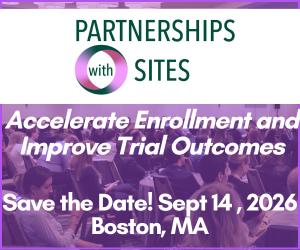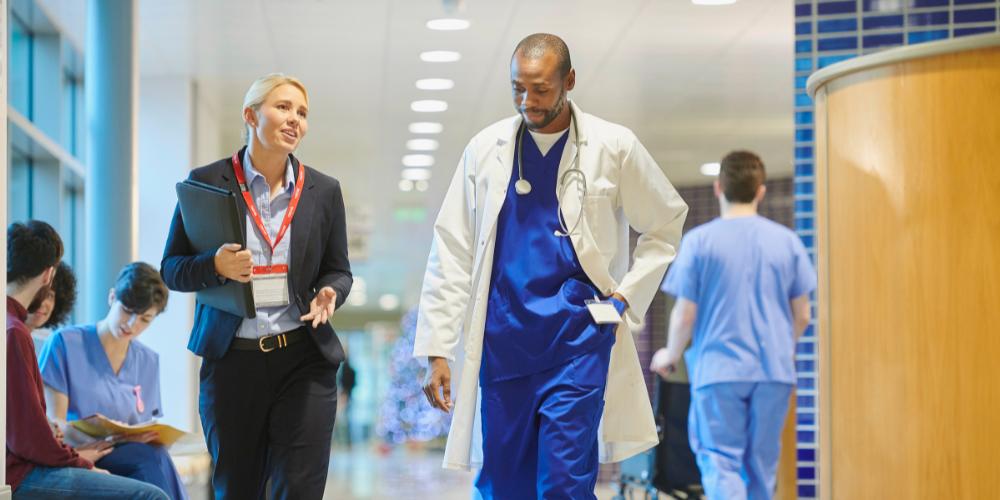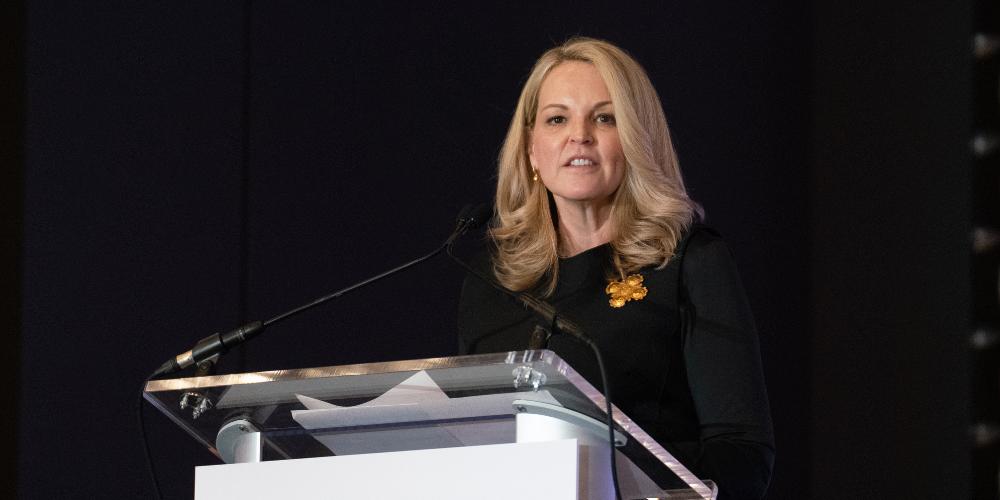Creating Community Hospital and AMC Partnerships to Give More Patients the Option of Clinical Trials
Northwell Health’s SVP of Clinical Research, Dr Christina Brennan, discusses how partnerships between community hospitals and AMCs can give more patients access to clinical research as a potential care option. She also talks about what Northwell is doing to generate awareness of clinical trials and build trust with the community.

What needs to happen for clinical research to be considered a viable care option in the hospital setting?
From the community hospital perspective: for clinical research to be considered as a care option, it starts with physician buy-in. That is what makes it still a challenge, because the top place that patients hear about clinical trials is from their provider. Therefore, you need physician buy-in and you need physicians to not think of clinical trials as a last resort. Part of that can be done through providing community physicians with training and support. Additionally, most patients come from the community setting, which also requires breaking the misconception that clinical trials are only offered at large academic medical centers or large healthcare systems.
From the AMC perspective: I feel that larger academic medical centers who are challenged with getting more patients in the community involved in trials, could offer to work with smaller hospitals and clinics as satellite sites for enrollment. It doesn’t mean that the entirety of the trial has to occur at the local center, particularly if they don’t have the full infrastructure, but screening and recruitment can be done there.
What often stops community hospitals from entertaining the possibility of adding clinical trials as part of clinical care delivery?
Resource constraints are real and people often misjudge what it's like to have clinical trials at your site. It requires funding, staff, infrastructure, personnel, equipment and technology. On top of that, we keep advancing with technology. Although healthcare is usually the last to keep up, it's expensive to maintain.
There are competing priorities for these smaller community hospitals and clinics that mean they cannot add on research activities. Community hospitals and clinics may feel that they put a lot of resources, time and effort into clinical trials if they decide to participate as an individual site, only for their patients to be recruited elsewhere. Physicians who are not investigators also do not prefer to refer patients to clinical trial sites in fear of losing those patients.
How can we address or mitigate resource challenges?
I do think that community locations have a part in clinical research as care, but if community hospitals are not able to take on the full breadth of clinical trials, we need to create better partnerships with, for example, academic medical centers that are already participating.
It creates a continuum of care. The community hospital could be a satellite site for follow-up, for example, which means that they don’t lose their patients. They may be more open to partner with AMCs to help with recruitment, because the ultimate goal is to recruit and retain in order to bring therapies faster to patients and get them out into the communities. We’re not going to get there alone, so we need to be thinking about creative ways to partner.
"If community hospitals are not able to take on the full breadth of clinical trials, we need to create better partnerships with, for example, academic medical centers that are already participating."
How has Northwell created institutional awareness of clinical research?
It starts from the very top, with our president and CEO, Michael Dowling, who openly discusses clinical research. When new physicians have orientation, we talk about research as a part of our mission and strategy. It should be a part of the culture so that if they want to participate, they are able to. Not every clinician will be an investigator, but they should be aware of clinical research going on at Northwell.
We have 90,000 employees, and we undertook a campaign of research awareness. I had conversations with our marketing team and decided that we would focus on screen savers. Four times a year, we have a screensaver that goes across everyone’s computer driving the message that Northwell participates in clinical trials. Now, these 90,000 employees are ambassadors, bringing that message to their friends, families and the communities that we serve.
How has Northwell connected its clinical trial work to the community it serves?
A few ways.
One: We have a community department that focuses on partnerships and places that those community members trust the most, from churches and salons to barber shops and schools. As an example: our chief community physician convened leaders from local churches and places of worship to spend a day at Northwell. Those kinds of steps build rapport and trusted relationships. That helps us then bring a trial to the patient in the community.
Two: We do information sessions and town halls, in which we go to local venues and educate community members about clinical trials. That sounds very grassroots, but once you start with one community, it does build. We looked at metrics to see which communities by zip codes needed the support and that is how we chose which we would focus on.
Three: We’ve done education sessions for our clinical research professional workforce on the cultural needs of different communities and how we can support them. It can be as foundational as translating materials to relevant languages and make sure that outreach efforts are culturally appropriate.
"It is worth finding the time, resources and attention from leadership in order to figure out how research activities can be a part of clinical care delivery."
How can we get more access to clinical trials for patients, particularly those who aren’t near big medical centers?
For AMCs, they're going to need local community partnerships, whether through some of the network research institutions or allowing local community hospitals and clinics to be involved in their research. That’s one of the only ways forward to improve recruitment and retention.
For Northwell, we are looking at ways to get even further involved in the community. We have over 900 ambulatory centers. We know patients visit our GoHealth centers and we want to make sure that the messaging around our clinical trial participation is out there.
We are also looking at partners like Walgreens. They have so many visits per day from the community, and we are looking at how we can do part of trials in those settings.
We are also continuing on the pathway of decentralized clinical trials. When we did a fully remote trial and looked at the metrics, we found that the patients who enrolled were from communities we had never had participation from before. That could be a way to continue our efforts, by making it a patient’s choice to come into a center versus participate virtually. Some may prefer brick-and-mortar, but for those who have challenges with transportation or childcare, we can encourage participation by removing those barriers.
Anything else?
It took us years to get to the place where we are now – that research is a part of our mission. It took many conversations with senior-level, C-suite leaders about why it was so important for the patients and communities we serve, as well as for the physicians and new recruits that we need to participate in clinical research.
It requires a lot of buy-in to get people to a) understand and b) not see it as a challenge or a competing priority. It is worth finding the time, resources and attention from leadership in order to figure out how research activities can be a part of clinical care delivery.
In This Article






